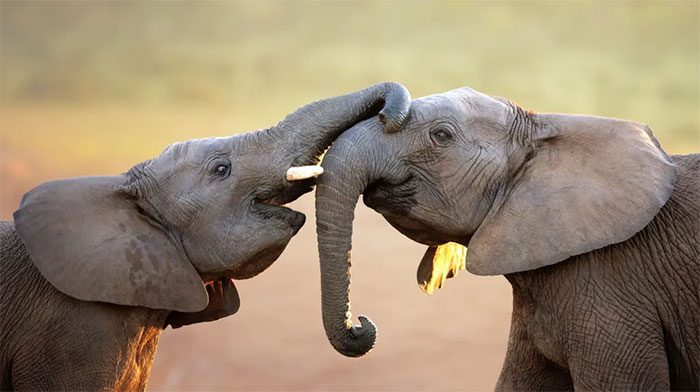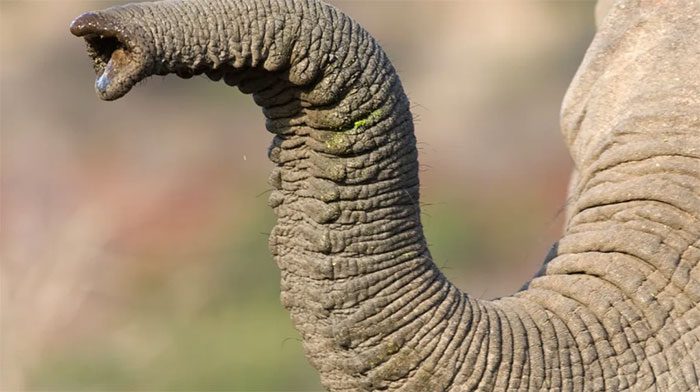Scientists believe that elephants have evolved and developed their trunks to become adept due to the need to adapt to climate changes millions of years ago.
The elephant’s trunk is extraordinarily special, incredibly strong, exceptionally nimble, and flexible. Now, scientists have been able to answer the question of why the largest land animal possesses such a marvelous trunk.

Elephants have long and extremely dexterous trunks, capable of picking up even a tiny peanut. (Photo: Getty Images).
The elephant trunk is a marvel of evolutionary biology. An elephant can have a trunk that is 2 meters long with over 40,000 muscles and nerve fibers. This trunk is strong enough to lift weights of up to 270 kg and also dexterous enough to pick up a small peanut.
For a long time, scientists have been interested in understanding the environmental and biological conditions that led to the evolution of elephants and their unique trunks. Now, they can confirm that climate changes are the primary reason explaining this “secret” of elephants.
The soft tissues of elephant trunks, such as muscles and skin, do not preserve well during the fossilization process. Therefore, studying the evolution of elephant trunks is quite challenging. Scientists have struggled to find direct evidence of the first elephant trunks in fossil remains.
Many animals with long trunks often also have elongated lower jaws, but the lower jaw of elephants has shortened in the process of evolving alongside their trunks.

Researchers believe that elephant trunks evolved due to changes in the habitats of their ancestors on grasslands. (Photo: Getty Images).
Researchers have studied three families of mammals similar to elephants that lived on Earth between approximately 11 million to 20 million years ago, examining the differences in their ecosystems and foraging habits. They noted that these ancient mammals all had long trunks but also exhibited many distinct features, thus comparing them throughout evolution can help us understand the evolution of the trunk.
Through analysis of their dental enamel, researchers learned about the foraging habits and habitats of these animals. They discovered that the prehistoric elephant family Choerolphontidae lived fairly close to forest environments, while the prehistoric family Amebelodontidae primarily inhabited open grasslands, and the prehistoric family Gomphotheriida lived in between these two environments.
Scientists combined these findings with mathematical simulations of the jaw movements of these extinct species.
They concluded that the prehistoric Cherolophodon elephants lived in dense forests with many trees having wide, leafy branches, so their jaws evolved to adapt to a more vertical up-and-down motion rather than a forward-and-backward motion, allowing them to easily forage for food through the tree canopies horizontally. At this stage, their trunks were still quite clumsy.
However, the jaws of the other two elephant species, which lived in broader and more open environments, gradually adapted to the action of stripping leaves vertically, such as from grasses or soft-stemmed plants. Their nasal cavities resembled those of modern elephants more closely, indicating that their trunks could curl or grasp to bring food directly to their mouths.
The environment during the Neogene period changed from warm and humid to colder and drier. During this time, these ancient elephants began using their long trunks to graze on grass.
The vast open grasslands have driven the evolution of elephants to develop the dexterous trunks we see today. This also explains why animals living in dense forests, such as the tapir, have weaker trunks than elephants.




















































